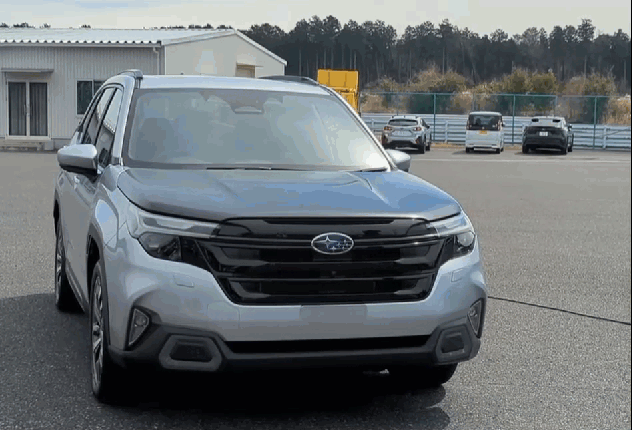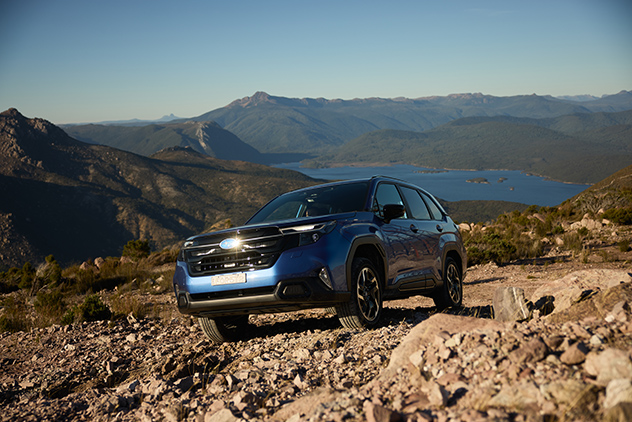
A special airbag designed to prevent injuries to a cyclist in the event of a collision will debut on the next Subaru Forester – but only on Japanese models.
While external airbags designed for pedestrian protection have been fitted to some cars in the past, this is the first time the safety technology has been directed at cyclists.
According to Subaru, when a vehicle and a bicycle collide, the cyclist often hits the vehicle higher up, making pedestrian-focused external airbags less effective or ineffective.
Because A-pillars are designed for maximum strength to protect the car’s occupants in the event of a rollover, they can also cause serious injury in a cyclist collision.
Subaru’s new airbag is housed at the top of the bonnet and, when inflated, forms a U-shape that covers the back edge of the bonnet and the A-pillars all the way to the roof.

The Subaru Forester’s external airbag deploys to protect cyclists during a collision scenario. Footage taken from Car Watch Channel
It isn’t clear why Subaru Australia won’t be adopting the cyclist airbag locally. Subaru’s Australian distributor has been contacted for comment.
Australian crash authority ANCAP welcomed the introduction of external safety technology on new cars.
“ANCAP has rated several models that offer external airbag systems, such as the Volvo V40, which pioneered the external pedestrian airbag in 2012,” said ANCAP chief executive Carla Hoorweg. “We continue to encourage innovation that enhances protection for vulnerable road users, including pedestrians and cyclists.
“Cyclists typically make initial contact with a vehicle at a higher point, such as the bonnet edge, A-pillars, or windscreen, compared to pedestrians. To better reflect this, ANCAP’s current 2023–2025 protocols introduced an extended head impact assessment zone, covering a broader area up the windscreen and A-pillar than previously assessed under pedestrian-only criteria.
“Further, the upcoming 2026–2028 protocols will incentivise manufacturers to address A-pillar impacts – an area that while currently assessed – often performs poorly. Although countermeasures are not mandated, the new criteria increase the likelihood of improvement through objective assessment.
“External systems like those being introduced by Subaru are a positive step in broadening protection. Future updates to ANCAP’s test and rating criteria will continue to encourage innovations that improve outcomes for both pedestrians and cyclists.”
